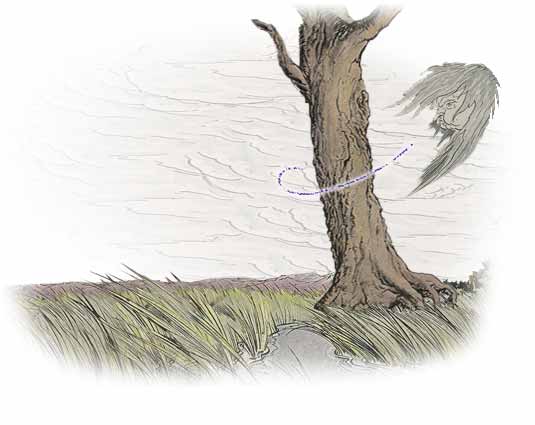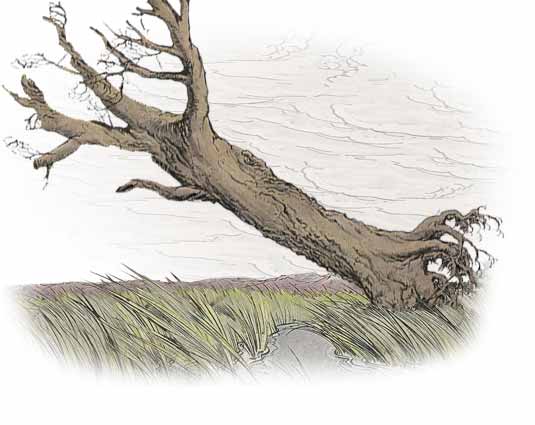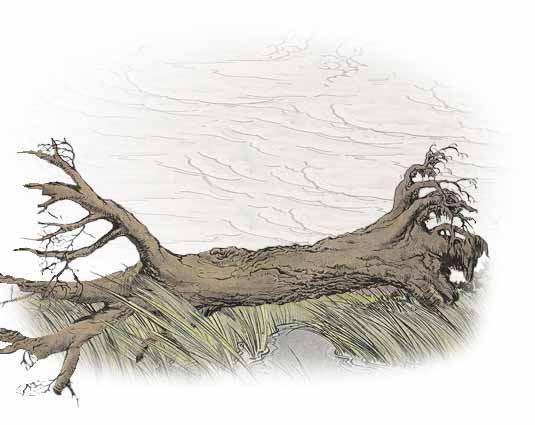The Oak and the Reeds 橡树和芦苇 (精美插图) 双语 拼音注音 伊索寓言
标签:伊索寓言 儿童故事集 中英对照翻译 双语故事 拼音注音
Last Update 最后更新: 2022-01-12



The Oak and the Reeds (English)
Total Words: 188
A Giant Oak stood near a brook in which grew some slender Reeds. When the wind blew, the great Oak stood proudly upright with its hundred arms uplifted to the sky. But the Reeds bowed low in the wind and sang a sad and mournful song.
"You have reason to complain," said the Oak. "The slightest breeze that ruffles the surface of the water makes you bow your heads, while I, the mighty Oak, stand upright and firm before the howling tempest."
"Do not worry about us," replied the Reeds. "The winds do not harm us. We bow before them and so we do not break. You, in all your pride and strength, have so far resisted their blows. But the end is coming."
As the Reeds spoke a great hurricane rushed out of the north. The Oak stood proudly and fought against the storm, while the yielding Reeds bowed low. The wind redoubled in fury, and all at once the great tree fell, torn up by the roots, and lay among the pitying Reeds.
Moral: Better to yield when it is folly to resist, than to resist stubbornly and be destroyed.
橡树和芦苇 (中文翻译 拼音注音)
一棵高大的橡树长在一条小溪旁,溪水里长着一些细长的芦苇。当风吹来的时候,大橡树就自豪地把它的枝叶伸向天空。而那些芦苇则在风中低着头,吟唱着婉转哀怨的歌。
“你可以埋怨,”橡树说。“即便是微风拂面,你也不得不低下头来,而我,伟大的橡树,即便北风怒号,也依然傲然挺立。”
“不必担心我们,”芦苇答道。“风儿不会伤害我们。我们在风的面前低头,就不会折断自己。而你,仗着自己的力量,到目前为止都成功抗拒了它们的侵袭。但是,末日就要来临了。”
正当芦苇言语的时候,一场超级龙卷风从北方呼啸而来。橡树傲然挺立着,抵抗着这场风暴,而那些柔软的芦苇则深深地低着头。风暴越刮越大,突然,大橡树倒下了,它被连根拔起,躺在那一片深表惋惜的芦苇之间。
About 关于
The Aesop Fables for Children 伊索寓言儿童故事全集 (图文英汉双语版) (this work), the english fables originally from The Aesop for Children: with Pictures by Milo Winter published by Rand, McNally & Co in 1919. Some of pictures come from Library of Congress. This work is considered to be in the public domain in the United States. The Aesop Fables for Children contains the text of selected fables, color pictures, video, and interactive animations, and will be enjoyed by readers of any age.
The Aesop Fables for Children are a collection of stories designed to teach moral lessons credited to Aesop, a Greek slave and story-teller thought to have lived between 620 and 560 BCE.
Aesop's fables are some of the most well known in the world and have been translated in multiple languages and become popular in dozens of cultures through the course of five centuries. They have been told and retold in a variety of media, from oral tradition to written storybooks to stage, film and animated cartoon versions—even in architecture. This page include translation to Simplified Chinese.
伊索寓言是一部世界上最早的寓言故事集,是世界文学史上流传最广的寓言故事之一。 本文包含伊索寓言故事英文原文和简体中文翻译(中英双语)。




